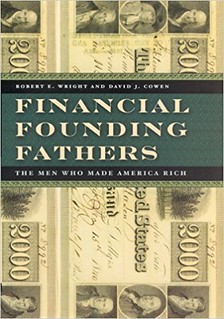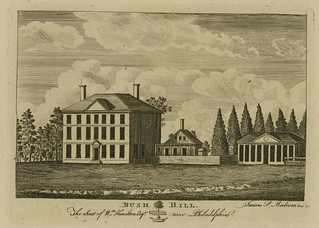
PREV ARTICLE
NEXT ARTICLE
FULL ISSUE
PREV FULL ISSUE
DRS. RUSH AND STEPHEN GIRARD VS. YELLOW FEVERNumismatists know Dr. Benjamin Rush who served as treasurer of the United States Mint from 1797–1813. This book excerpt from the Delancey Place blog highlights the service of Rush and financier Stephen Girard during Philadelphia's Yellow Fever epidemic. -Editor
French-born Philadelphian Stephen Girard, an international merchant and trader, was perhaps the richest man in America in the late 1700s and early 1800s. With assets of $7 million at his death ($200 million in today's dollars), he was also one of America's greatest philanthropists. In 1793, a yellow fever epidemic forced George Washington, the U.S. government and almost every citizen of means in Philadelphia to leave. Girard, richest of them all, stayed behind saving lives: "Unlike many philanthropists, Girard did not wait until he died to start helping others. His finest hour occurred during Philadelphia's great yellow fever epidemic in 1793. That episode, largely forgotten in American history, was one of the greatest disasters to befall any American city. The gravity of the epidemic increases when one realizes that Philadelphia was at the time the nation's temporary capital. Yellow fever, so named because the victim's skin turns a yellowish hue, is fatal to as many as half of those who contract it. If the afflicted does not successfully resist the disease, he dies a tortuous week-long death filled with bouts of high fever, chills, black vomit and diarrhea. Were this not awful enough, the alleged cure for the malady, the one pushed by Philadelphia's leading physician, the famed Dr. Benjamin Rush, involved bloodletting and mercury purges. Rush, like Girard, bravely stayed in town and tried his utmost to aid the sick. Unfortunately, Rush's harsh treatment plan caused untold deaths. "In 1793, the population of Philadelphia and its suburbs was approximately 45,000 [the largest in America]. ... Before the epidemic ended with the November frosts, some four to five thousand Philadelphians, about 10 percent of the city's population, lay yellowed and dead in pools of vomit and excrement. In a typical day, just prior to the plague, an average of three Philadelphians died. On October 11, at the peak of the plague, 119 persons met their excruciatingly painful end. ... "No one great or small was immune to this plague. None other than Alexander Hamilton caught the fever on September 5. Soon thereafter, his beloved wife Betsy also became ill. Dr. Edward Stevens saw to their recovery, which became instant front-page news. Stevens's treatment was much milder than the aggressive bloodletting and purging that Dr. Rush espoused. Soon, controversy over the proper course of treatment divided Philadelphia's doctors and leading citizens. ...
"But Girard was not suicidal. ... Like Hamilton, Girard, who was conversant with the principles of medicine due to his youthful experience as a sailor, shunned Dr. Rush's harsh treatments in favor of the milder approach of Dr. Stevens. Moreover, Girard did not believe that the disease was contagious, attributing the far-reaching nature of the epidemic instead to the widespread distribution of the city's filth. ... "For sixty straight days Girard managed the makeshift hospital and cared for the ever-growing number of sick. ... A contemporary observer noted that Girard had to perform 'many disgusting offices of kindness for (the patients), which nothing could render tolerable, but the exalted motives that impelled him to this heroic conduct.'" To read the complete article, see:
To read the earlier E-Sylum article, see:
Wayne Homren, Editor The Numismatic Bibliomania Society is a non-profit organization promoting numismatic literature. See our web site at coinbooks.org. To submit items for publication in The E-Sylum, write to the Editor at this address: whomren@gmail.com To subscribe go to: https://my.binhost.com/lists/listinfo/esylum All Rights Reserved. NBS Home Page Contact the NBS webmaster 
|

